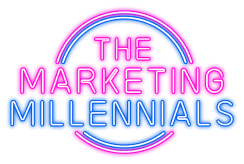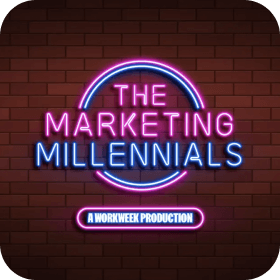If your grandma is anything like mine, you’ve probably gotten something from QVC. Maybe it was a set of nonstick pans, a sparkly brooch, or a miraculous skincare cream guaranteed to turn back the clock.
Since going live in 1986, QVC has ruled the television shopping market with an iron fist (that you can now get for $̶2̶9̶.̶9̶9̶ $19.99!)
But here’s the thing: a lot of the tactics we use today were perfected by QVC. And with the rise of social commerce, it’s clear QVC wasn’t just ahead of its time; it may have laid the blueprint for how we sell in the digital age.
Here’s how QVC changed the game—and why it still matters today…
Second Mover Advantage
The year is 1986 and the Home Shopping Network is making money, hand over fist.
They were the trailblazers of teleshopping, turning TV into a prime-time sales machine. HSN proved that consumers were willing to shop right from their couches—and the idea of selling products through live infomercials was taking off.
If you’re like me and weren’t alive for HSN’s peak, it’s kinda crazy to watch. The pitches are quick, over-the-top, and straight to the point. Hosts would give their viewers a hard sell and they would buy.
It was a simple playbook—and, at the time, it was working. In fact, HSN was doing so well that in 1986, they IPO’d, further solidifying their dominance in the teleshopping space.
But as the saying goes …. what goes up must come down.
Enter stage right (screen right?) Joseph Segel.
In 1986, Joseph Segel had already started the largest collectable coin company in the country and he was hungry for his next big opportunity.
And that’s when a newly-public HSN caught his eye.
Segel threw himself into researching the company. He poured over their prospectus, watched their recordings, and came away with 1 conclusion:
He could make his own HSN, but better.
So, he started a competitor: QVC. But how would they set themselves apart?
Level up your marketing game
Zero BS. Just fun, unfiltered, industry insights with the game-changers behind some of the coolest companies from around the globe.
No spam. Unsubscribe any time.
They rewrote the sales playbook
QVC had a new formula:
Inform + Relationship + Social Proof = Sale
As part of QVC’s approach, Joseph had presenters study the product they were selling.
And I mean really study.
They’d dive into sales data, understand the product inside and out, and even anticipate customer questions—turning every segment into a genuine, informative conversation instead of just a sales pitch.
They took the time to ensure the audience understood the product, so they could see why they needed it.
This was a massive shift from HSN’s “spray and pray” formula, where presenters would quickly air a product, mention its benefits and price, and then move on to the next one.
QVC’s approach made the whole experience feel more personal, which brings us to the next part of their formula …
The cult of personality
No one likes to be lectured. But, QVC sellers didn’t just talk at the audience; they had a conversation with them.
While HSN showed static products narrated by disembodied voices, QVC put presenters’ unique personalities at the center of the experience.
They had sellers hold the product, interact with it, and speak straight to the audience about why they liked it.
Oh, and presenters represented the target audience of the products they sold. i.e, they had dads selling video cameras, grandmas selling cute birdhouses … and this guy selling comics:
Think of it like an unboxing video on YouTube. Viewers got to live vicariously through the person on-screen playing with a cool product, and hear what they thought was cool about it.
By building a sense of familiarity and trust with the audience people forgot they were being sold to. They felt like they were listening to a friend.
Sitting in class? BORING. (Sorry, Mom). But, sitting in the back of the class with your bestie?? That’s *chef’s kiss* 🤌.
The presenters weren’t just selling products—they were building relationships. Viewers tuned in for the products, but they stayed for the personalities and conversations that developed over time.
As a result, retention skyrocketed.
In fact, QVC’s current retention rate for existing customers is 89% while 92% of their revenue comes from those returning customers (per QVC’s CEO). That’s NUTS.
If it seems like I’ve been singing the praises of “1-1 connection” a lot lately, it’s because it WORKS. Plain and simple. There are some wheels that just don’t need to be reinvented.
When people feel connected to a brand and its people, they come back.
Then … they brought in the closer
Kathy from Minnesota.
Yep, live customer testimonials. If you’ve ever seen a QVC stream, you know what I’m talking about.
If not, let me paint a picture:
After singing the praises of a silver tennis bracelet for 5 minutes, the host pauses.
The voice of a midwest mom pipes in, gushing about how they bought 3 and wear them everywhere.
Then the host banters with them and asks them questions like they’re a celeb on late night TV. And frankly, on QVC, the customers are celebs. And they’re an essential part of QVC’s strategy.
They tap into one of the most powerful forms of social proof: peer validation.
Hearing someone rave about how a product has changed their life or how easy it is to use builds trust instantly. Especially if that person sounds just like you.
It’s no longer just the presenter doing the selling—it’s everyday people, like you and me, vouching for the product.
It’s pure marketing magic.
Who cares in 2025?
You’ve gotten to the end of this newsletter and you’re probably thinking
“Daniel, all this is pretty cool for the 20th century but what does it have to do with me?”
2 words: TikTok Shop.
If you’ve scrolled through TikTok recently, you know exactly what I’m talking about.
One of the biggest trends I’m watching is social commerce.
Regular folks and influencers alike are showing off their favorite products, live streams are packed with sales pitches, and the “TikTok Made Me Buy It” phenomenon is driving millions of dollars in purchases.
But here’s the kicker: the strategies QVC mastered in the ’80s are the backbone of this new era. Influencers are just taking the QVC formula and are adapting it for modern audiences.
The more things change, the more they stay the same. Whether it’s on a cable channel in 1986 or a TikTok Live in 2025, the formula for success is rooted in trust, education, and connection.


